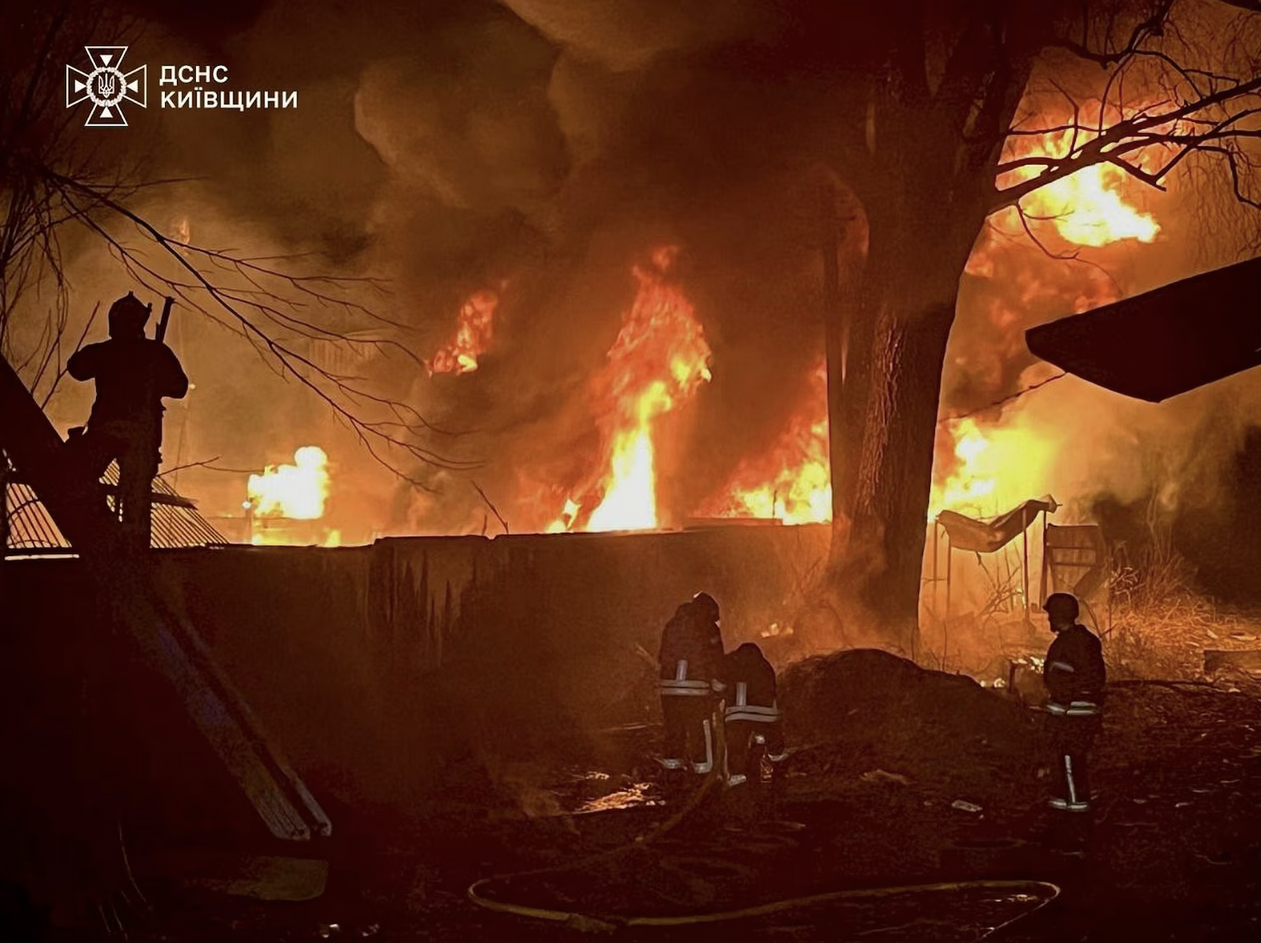On Sunday, March 30, 2025, Russia continued its unrelenting drone strikes on Ukraine, launching nearly 200 drones against various cities in response to its own unsubstantiated claims that Ukraine had targeted Russian energy infrastructure the day before. Russia being Russia, then struck a hospital, a shopping center, and multiple apartment blocks in Kharkiv—an act President Zelenskyy denounced as a “deliberate” targeting of a hospital. In a surprising pivot, U.S. President Donald Trump declared himself “very angry” with Vladimir Putin’s repeated attacks on Zelenskyy’s legitimacy, going so far as to threaten heavy secondary tariffs on Russian oil if the Kremlin continues to stall on a ceasefire. Citing Putin’s suggestion that Ukraine be placed under temporary UN administration, Trump warned he could impose up to a 50% tariff on any country purchasing Russian oil—though he also hinted he would back down quickly if the Kremlin “does the right thing.”

On Monday, March 31, 2025, the Kremlin launched its largest draft in over a decade—160,000 men—further evidence that Russia has no real intention to negotiate. Coming on the heels of territorial gains in Kursk and a wavering U.S. stance, Putin’s move reinforced the perception that Moscow is deliberately stalling any deal or ceasefire to exploit what it sees as Western weakness. This sweeping conscription campaign, reported by state-owned media TASS, marks the biggest call-up since 2011 and signals how deeply entrenched Russia is in the conflict. Meanwhile, EU foreign ministers convened in Madrid and accused Moscow of “playing games and not really wanting peace.” France and Poland pressed for a firm deadline to push Russia into actual negotiations—rather than letting the Kremlin keep “passing the ball” down the field. Coupled with President Trump’s threats of additional oil tariffs, it showed that while Washington might be on a different page, at least it was still reading the same chapter as Europe.
Tuesday In what felt like an increasingly rare show of unity, half of the U.S. Senate—25 Republicans and 25 Democrats—came together to propose a new round of “hard-hitting” sanctions on Russia if the Kremlin continued to avoid serious negotiations. The bipartisan legislation threatens tariffs on nations purchasing Russian oil, gas, and uranium, signaling that even with the Trump administration’s erratic stance, Congress could be ready to turn up the pressure. Zelenskyy, speaking alongside Germany’s foreign minister, backed the move and urged the U.S. to follow through, citing fresh Russian violations of the limited ceasefire on energy infrastructure.
It only took a day for the Kremlin to seemingly work its way back into Trump’s good graces. On Wednesday, Putin’s envoy Kirill Dmitriev, head of Russia’s sovereign wealth fund, arrived in Washington for meetings with Trump officials—marking the first high-level Russian visit since the war began in 2022. Dmitriev, long tied to Trump’s inner circle, was granted a temporary sanctions waiver just to make the trip, shedding light on how actively the Trump administration is maintaining its Kremlin backchannel. And for the talks on potential tariffs on nations still importing Russian oil and gas, instead, Ukraine would be tacked with a 10% levy while Russia managed to avoid the tariffs entirely. While this occurred Russia continued its missile and drone strikes on Ukraine killing 4 and wounding 14, all civilians as the strikes targeted the residential area of Kryvyi Rih.
On Thursday, Ukraine began warning that Russia is preparing to increase its troop presence in occupied territories by as many as 150,000 soldiers over the course of 2025—roughly the size of 15 full divisions. According to Ukrainian officials, recruitment and formation of these new units is already underway. The move confirms what many have suspected: that Russia is stalling ceasefire talks to buy time and build up for another major offensive. While Russia publicly engages in limited maritime-focused negotiations, their growing presence on the front lines makes their intentions all too clear. Also on Thursday, it was reported that U.S. Defense Secretary Pete Hegseth will skip next week’s Ramstein summit—marking the first time the Pentagon chief has been absent from the gathering since it began in 2022. The move further underscores the Trump administration’s desire to distance itself from allied military efforts, signaling a shift toward offloading the responsibility for Ukraine onto Europe at a time when U.S. foreign policy feels increasingly unpredictable—even to its own citizens and institutions.
On Friday, U.S. Secretary of State Marco Rubio warned that Russia is running out of time to prove it’s serious about peace, stating that the Trump administration would know “in a matter of weeks” whether Putin is negotiating in good faith—or just buying time. Speaking from Brussels after two days of NATO meetings, Rubio revealed that new sanctions are already being drafted by Congress, and suggested the administration may not be able to stop them if progress stalls. While still pushing Europe to increase military spending to 5% of GDP, Rubio’s comments hinted at a quiet shift in the U.S. government. On the same day, Russia carried out one of the war’s deadliest attacks in recent months, once again striking Kryvyi Rih. The missile strike killed 19 civilians, including nine children, and wounded nearly 50 others. While the Kremlin claimed it was targeting a military meeting, the aftermath told a different story—residential buildings and a playground were hit.

The fallout from Friday’s missile strike in Kryvyi Rih—which killed 18 civilians, including 9 children—continued to build as President Zelenskyy slammed the U.S. response as “weak” and accused Washington of being afraid to even name Russia as the perpetrator. He warned that diplomacy means nothing to Moscow, and that only real pressure—through sanctions and accountability—will have any impact on ending the war. Meanwhile, another diplomatic misstep surfaced stateside when the Trump administration admitted it had mistakenly sent deportation notices to some Ukrainian refugees settled under the Uniting for Ukraine (U4U) program. The Department of Homeland Security quickly walked back the threat of removal, but not before sparking widespread fear and confusion within Ukrainian communities across the U.S.